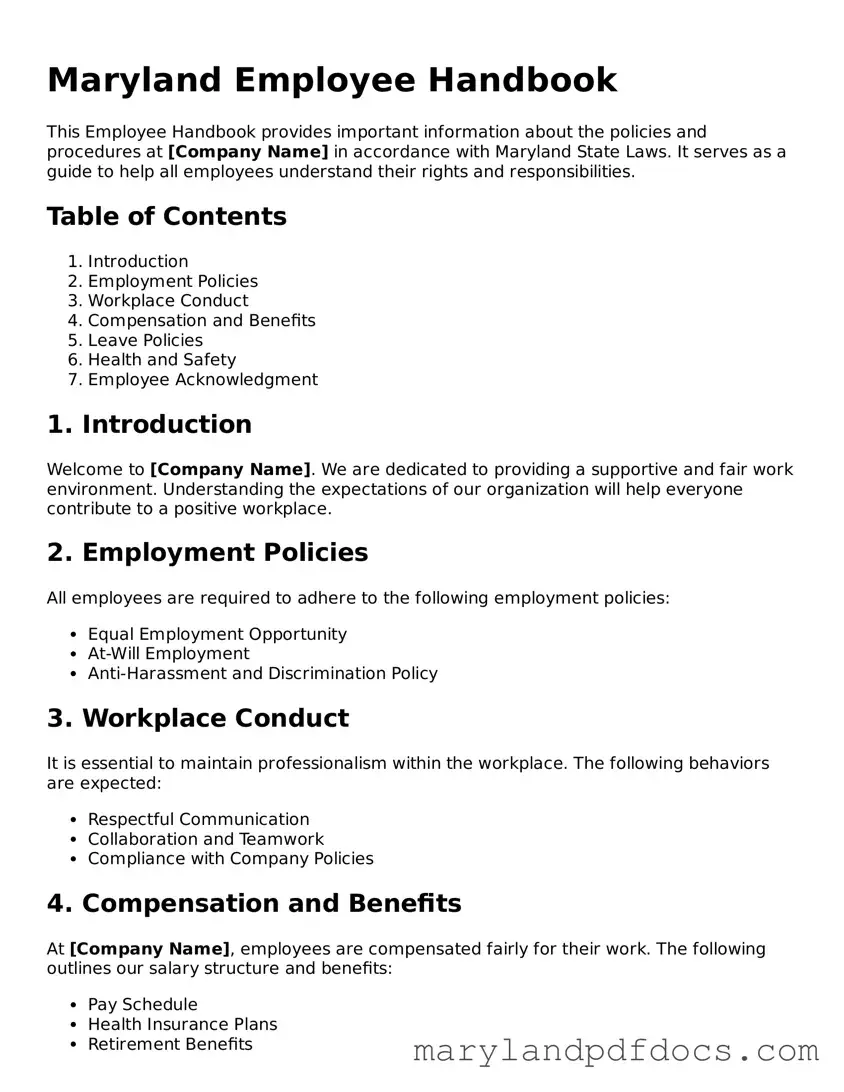Maryland Employee Handbook
This Employee Handbook provides important information about the policies and procedures at [Company Name] in accordance with Maryland State Laws. It serves as a guide to help all employees understand their rights and responsibilities.
Table of Contents
- Introduction
- Employment Policies
- Workplace Conduct
- Compensation and Benefits
- Leave Policies
- Health and Safety
- Employee Acknowledgment
1. Introduction
Welcome to [Company Name]. We are dedicated to providing a supportive and fair work environment. Understanding the expectations of our organization will help everyone contribute to a positive workplace.
2. Employment Policies
All employees are required to adhere to the following employment policies:
- Equal Employment Opportunity
- At-Will Employment
- Anti-Harassment and Discrimination Policy
3. Workplace Conduct
It is essential to maintain professionalism within the workplace. The following behaviors are expected:
- Respectful Communication
- Collaboration and Teamwork
- Compliance with Company Policies
4. Compensation and Benefits
At [Company Name], employees are compensated fairly for their work. The following outlines our salary structure and benefits:
- Pay Schedule
- Health Insurance Plans
- Retirement Benefits
5. Leave Policies
Employees at [Company Name] are entitled to various leaves according to Maryland State Law:
- Paid Time Off
- Family and Medical Leave
- Jury Duty Leave
6. Health and Safety
The safety of our employees is a priority. Employees are encouraged to follow all health and safety guidelines provided by the company.
7. Employee Acknowledgment
Please acknowledge that you have received and reviewed the Employee Handbook. Your signature below indicates your understanding of the policies outlined.
Employee Name: ________________________
Date: ______________________
Signature: ________________________
